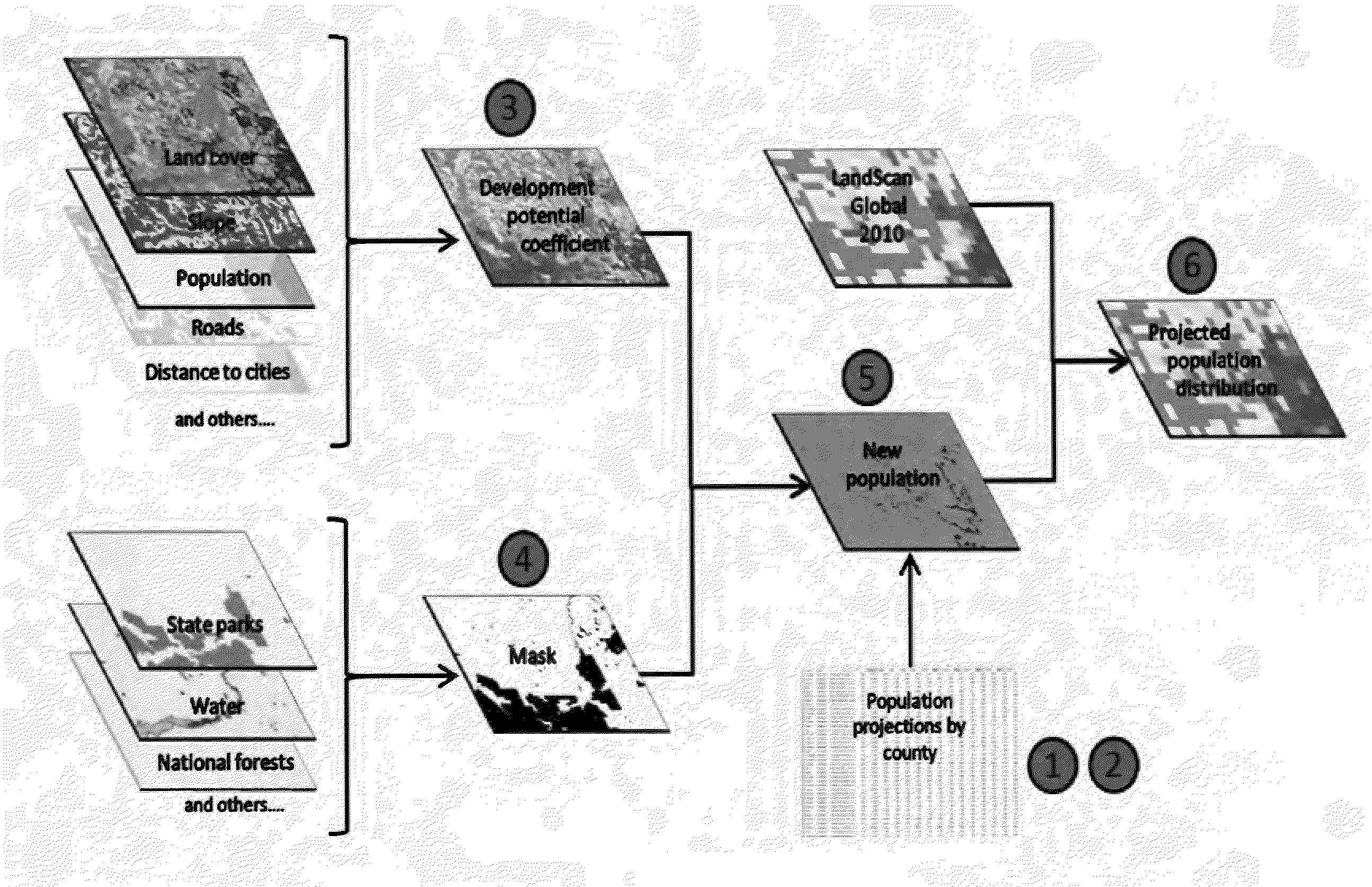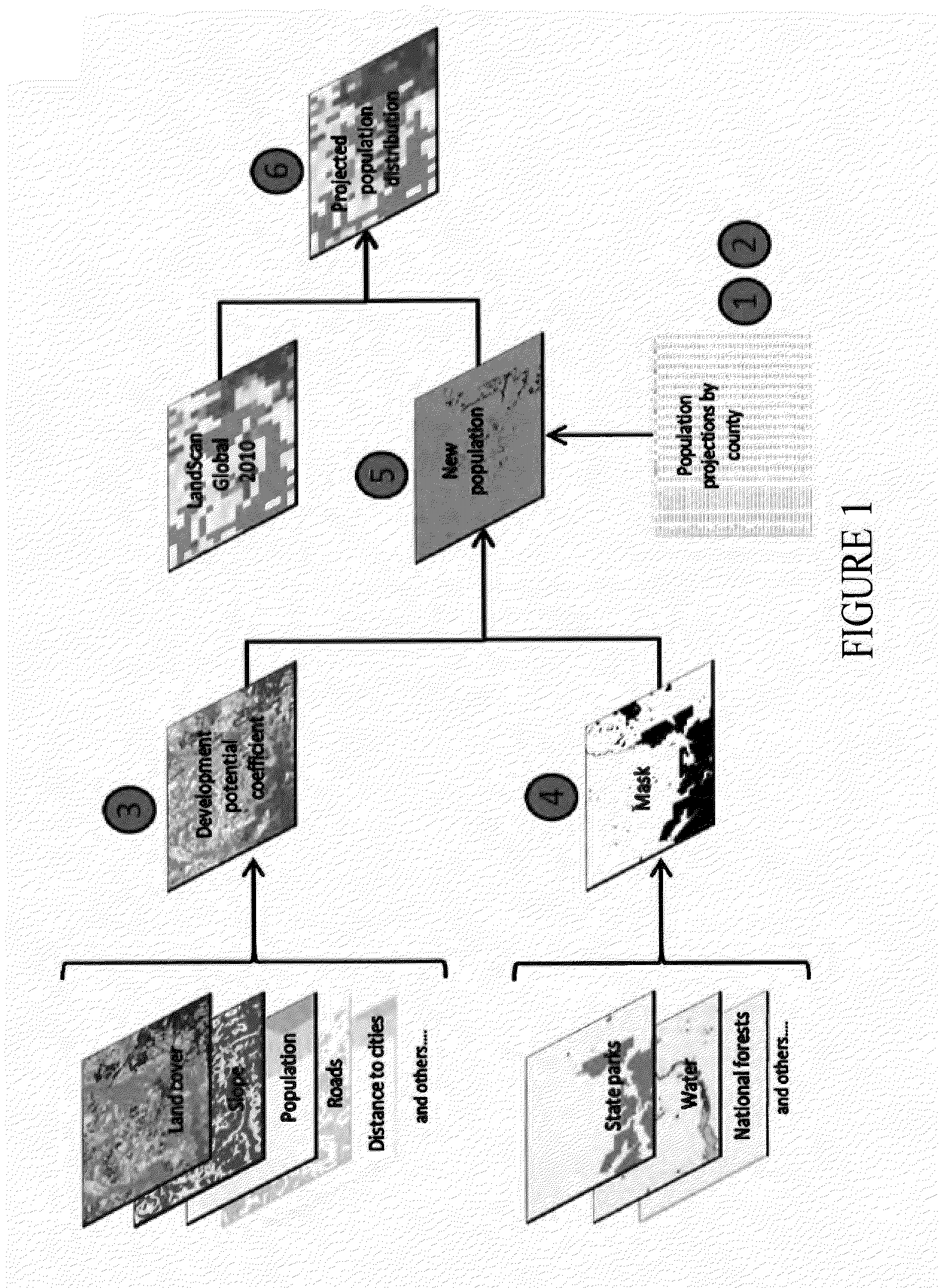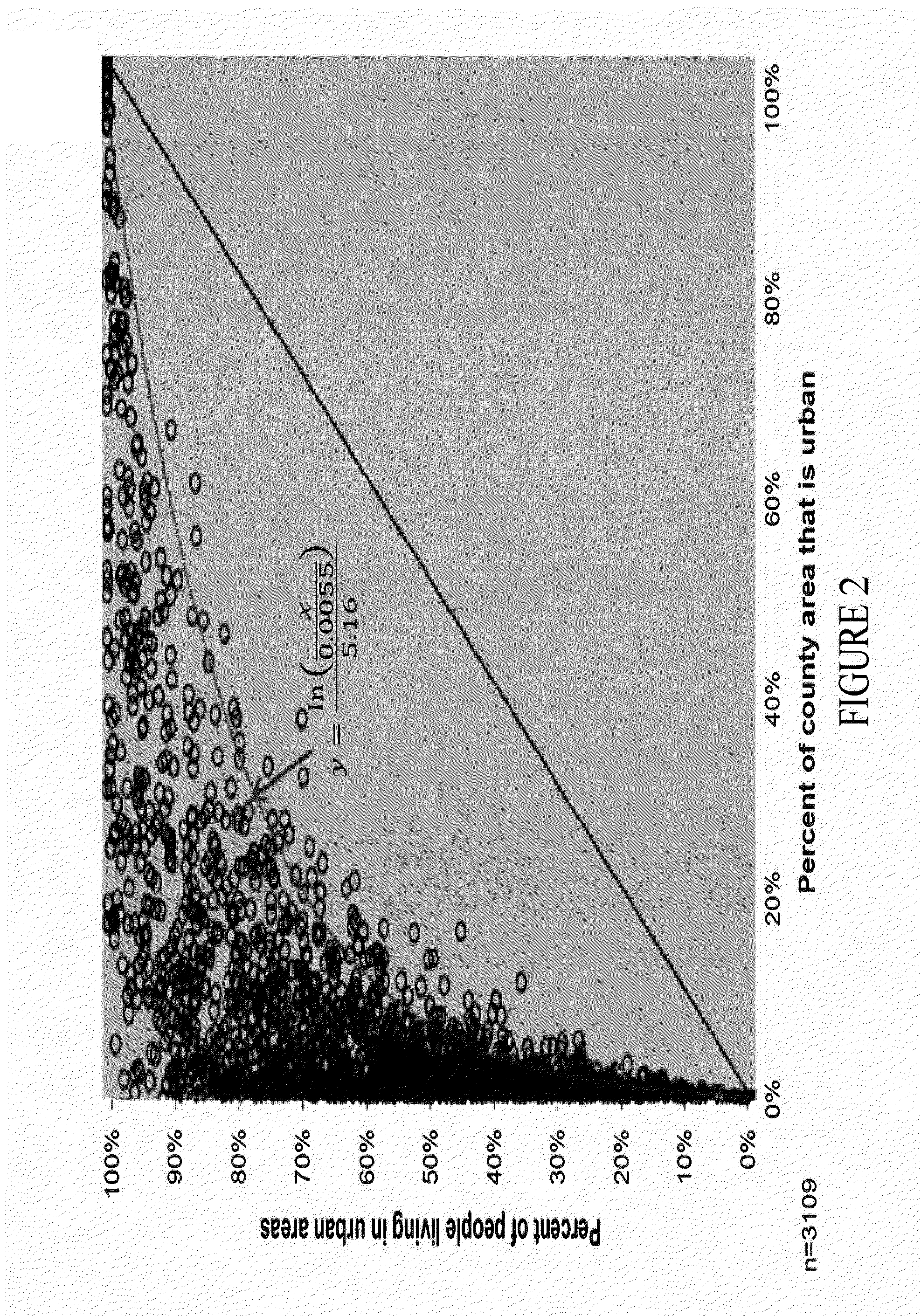Locally adaptive spatially explicit population projection system
- Summary
- Abstract
- Description
- Claims
- Application Information
AI Technical Summary
Benefits of technology
Problems solved by technology
Method used
Image
Examples
Embodiment Construction
[0016]Locally adaptive spatial systems forecast population changes and spatial distributions of these projections in two, three, or four (e.g., space-time continuum) dimensional space. The systems process theoretical and empirical variables or constraints to estimate change and predict spatial distributions of population forecasts of the future. The systems generate locally adaptive models that render graphical representations that display local, national, and very large scale distributions. The distributions reflect the processing of spatially varying dynamics. The projections may predict population vulnerabilities, identify areas for new physical construction, future spheres of influence, potential consumer bases, and may be used for local and / or regional planning, suitability modeling, consequence assessment, mitigation planning and implementation.
[0017]Applying a multivariable dasymetric modeling approach, some locally adaptive spatial systems identify potential growth surfaces ...
PUM
 Login to View More
Login to View More Abstract
Description
Claims
Application Information
 Login to View More
Login to View More - R&D
- Intellectual Property
- Life Sciences
- Materials
- Tech Scout
- Unparalleled Data Quality
- Higher Quality Content
- 60% Fewer Hallucinations
Browse by: Latest US Patents, China's latest patents, Technical Efficacy Thesaurus, Application Domain, Technology Topic, Popular Technical Reports.
© 2025 PatSnap. All rights reserved.Legal|Privacy policy|Modern Slavery Act Transparency Statement|Sitemap|About US| Contact US: help@patsnap.com



